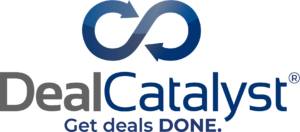August 15, 2024 - Recently, the Department of the Treasury and seven key financial regulators (the “Agencies”) proposed a controversial and problematic rule (the “Proposed Rule”) under a 2022 law, the Financial Data Transparency Act (“FDTA”). The FDTA was designed to modernize the collection and dissemination of financial data by and between federal financial regulators, making that information more accessible, more uniform, and ultimately more useful to investors and consumers. The FDTA contemplated that information be machine readable and searchable for ease of use and interoperable across the Agencies but it does not mandate changes to financial instrument identifiers.
Nevertheless, the Agencies proposed the Financial Instrument Global Identifier (FIGI) established by the Object Management Group, an open-membership standards consortium, as the identifier of financial instruments (seemingly to the exclusion of CUSIPs and ISINs). Notably, the Agencies proposed the use of the FIGI only for reporting by and among government agencies and not to replace the core functions of clearance, settlement, or trading for which CUSIPS and ISINs are generally used.
The proposal to require FIGI (to the exclusion of CUSIPs) is especially problematic for corporate loan market transactions which rely on CUSIPs and Loan X IDs. Lender positions are maintained by agent banks in Loan IQ, ACBS, AFS or a homegrown system with a CUSIP. Facilities are priced by S&P or LSEG LPC using a Loan X ID or a LIN, respectively. Trades are booked by dealers into the electronic settlement platform using CUSIPs, or if not available, a Loan X ID. For example, Shared National Credit Reports are filed using CUSIPs. In contrast, FIGI is not used in any capacity in the corporate loan market. Thus, the choice of FIGI as the sole identifier is very puzzling.
Moreover, a challenge that is unique to the loan market is that not all loans are public and not all CUSIPs are published, and it is not clear how the use of FIGI in those contexts would be feasible. While most CUSIPs for broadly syndicated loans are published to the CUSIP file, they can be restricted, meaning that they are not included in the file and not available to be further published, for example, on a Bloomberg screen. Restricted CUSIPs are nevertheless utilized by agent banks, lenders, borrowers, arrangers, sponsors and regulators to efficiently manage positions, borrowings, principal and interest payments and trades relating to such deals.
While it is early in the process it seems clear that, even if possible, requiring the use of an identifier that is not used in the market would be technically challenging, time consuming, open to errors and expensive.
It is also worth noting that the FDTA itself (rather than the Proposal) mandates the use of common legal entity identifiers for financial products, instruments, and transactions. The law requires that the joint standards include the use of “a common nonproprietary legal entity identifier that is available under an open license for all entities required to report to the Agencies and establishes the Legal Entity Identifier (LEI) as the joint standard. The LEI is a global, 20-character alphanumeric identifier that uniquely identifies the legal entity, issued by the Global LEI Foundation. Importantly, LEIs are not used in the corporate loan market and the selection of LEIs under the statute will be problematic. We will discuss this issue in more detail in a future article.
Once the Proposal is published in the Federal Register, a 60-day comment period will begin. The Agencies will then finalize the rule and have two additional years to implement the data standards into their respective data reporting regimes through agency-specific rulemaking.
We will continue to follow the Proposal closely and expect to submit a comment letter once it is published.






